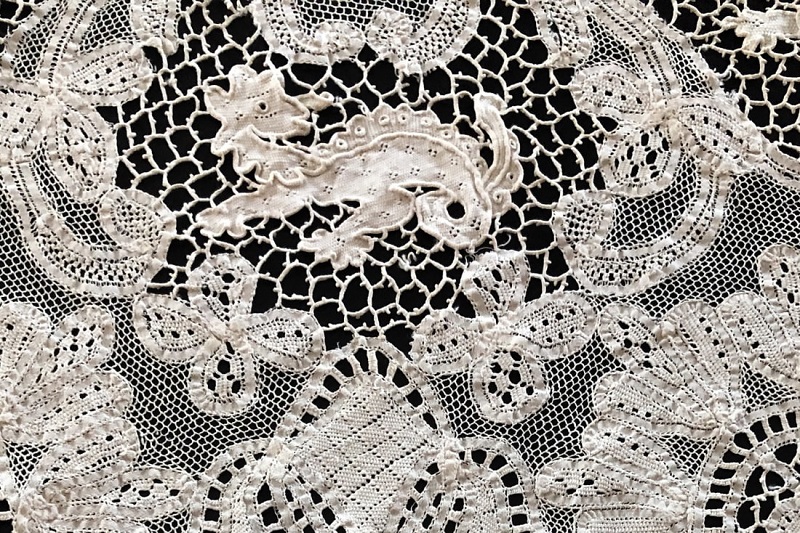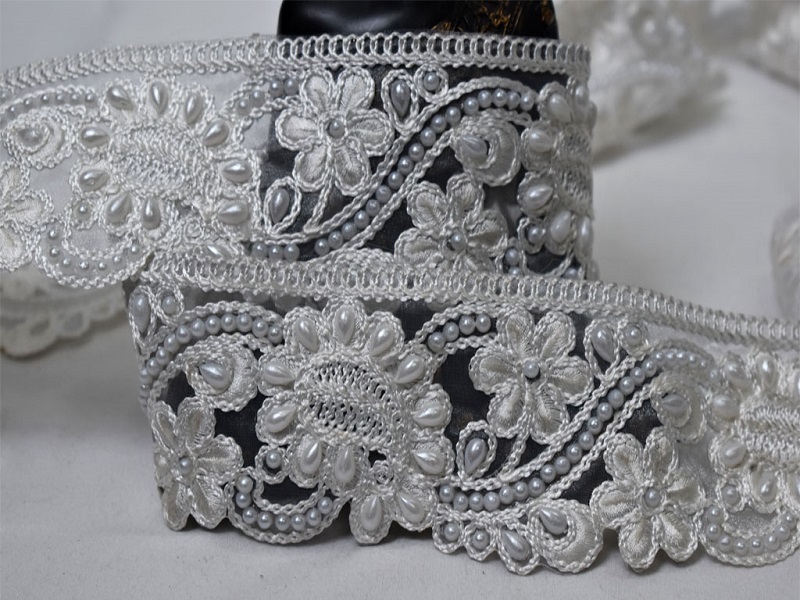It is widely known that lace is one of the most delicate materials that we can find when making.
So we are going to navigate through the world of threads so that you can know in-depth everything about this highly valued material.
Let’s start with the definition of lace and where you can use them, and then define the types of lace you can find.
We started!
What is lace?
The lace is a semitransparent composite fabric by embroidery network combining various forms voids and other dense to complete. Once finished, visually you can see shapes or motifs as a whole.
Traditionally it was made manually, but today, it is common to find lace fabrics created by machine.
It is interesting to differentiate the different types of manual manufacturing processes:
Needle lace: it is the most traditional system since it is made completely by hand only with needles and a kind of hooks. It is the most exclusive and, therefore, most expensive.
Bobbin lace: in a traditional way, the threads wound on the bobbins (bobbins) are woven.
Regarding the materials used for its creation, it is necessary to highlight without a doubt, the linen and silk threads. Delicate raw materials with high visual beauty and a delicate touch.
However, we can also find other more resistant and everyday materials, such as cotton threads, or similar for everyday garments that are more suffered.
Where can I use the lace?
This question has a very simple answer, as far as your imagination allows you.
Usually, the use of lace has focused on ornamentation combined with other fabrics.
Traditionally, white lace has been and continues to be, the flagship in bridal fashion, both for dresses, such as garters, veils, tiaras or sashes.
If we move to the world of ball gowns, black lace is the clear protagonist. It is a reflection of sophistication and elegance. But you have to be careful since we can go from a refined dress to a garment loaded with elements. The lace must be used in a balanced way.
However, and thanks to designers of the last decades such as Burberry Prorsum or the Chloé house, a step forward was taken and more transgressive designs began to be generated, using lace in everyday garments, such as embellished shirts or blouses.
Even brands such as Christian Louboutin or Channel have embarked on the adventure of lace footwear, a twist that made way for emerging designers.
Types of lace
The first point that we must analyze before starting our sewing is to decide with what type of lace we are going to work.
Today we want to leave you some tips on the most common types of lace that you can find in the market.
Chantilly
It is a lace made with the bobbin technique, mainly with silk threads. The visual patterns are usually floral motifs and extensive garland-like decorations. Widely used in wedding or party dresses.
Guipure
Also created with bobbins, with a delicate and fine outline. It is characterized by its high presence of floral motifs and it is common to find it in women’s lingerie.
Vaulted
Technique from France, also made with bobbins, is characterized by the small distance that is created between one pattern and another on the net, generating a sensation of a more compact and homogeneous fabric.
Lace
The basis of this Spanish bobbin creation lies in the use of silk on tulle. It is common to find it in cuffs, collars, and even mantillas.
What other trends do we find in the world of fashion with lace?
In the market, we have a wide variety of different fabrics, among which we would like to highlight the elastic lace for women’s underwear, which provides a sexy and elegant touch.
Metallic ones, with bronze, gold, or silver tones to give a distinctive touch to your garments, and also for home textile elements such as curtains or for regional costumes.
And now that you know the world of lace in more depth, do you dare to start including it in your designs?
If you need to find fabrics for your garments, do not hesitate to visit our online store where you will find all kinds of ideal lace to combine with different materials.

